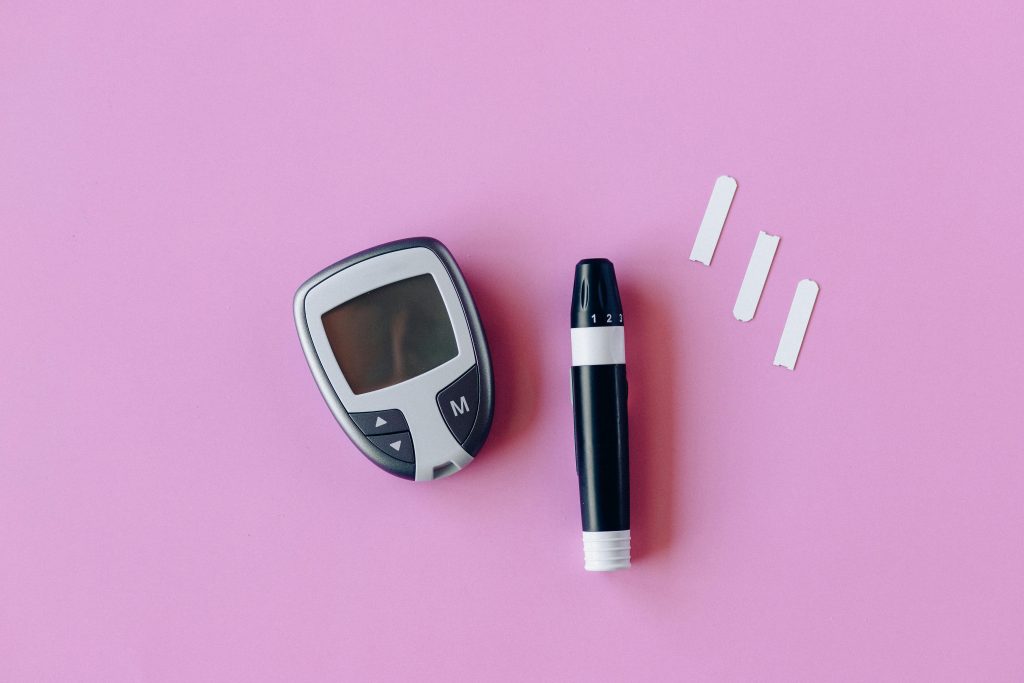Table Of Contents
-
Key Highlights: Essential Facts About Gestational Diabetes Nutrition
- Understanding Gestational Diabetes and Why Diet Matters
- Safe Foods and Core Food Groups for Gestational Diabetes
- Planning Balanced Meals and Smart Snacks
-
Interactive Meal Planning Calculator
- Smart Carb Choices: Fiber, Glycemic Index, and Sugar
- Customizing Meal Plans for Lifestyle and Culture
-
Frequently Asked Questions
-
Quick-Start Menu Examples
-
Conclusion: Taking Control of Your Gestational Diabetes Journey
- References and Additional Resources
 Quick Overview:
Quick Overview:
Managing gestational diabetes through proper nutrition is achievable with the right knowledge. This comprehensive guide covers evidence-based dietary strategies, practical meal planning, and real-world tips to help you maintain healthy blood sugar levels throughout your pregnancy.
Key Highlights: Essential Facts About Gestational Diabetes Nutrition
- Dietary management is the primary treatment for gestational diabetes, with 70-85% of cases controlled through lifestyle changes alone, avoiding the need for medication.
- Regular meal timing matters as much as food choice – eating balanced meals and snacks every 2-3 hours helps stabilize blood sugar throughout the day.
- Complex carbohydrates are your friend – choose whole grains, legumes, and starchy vegetables while limiting simple sugars and refined foods.
- Portion control prevents blood sugar spikes – skipping meals or eating large portions can cause dangerous fluctuations in glucose levels.
- Protein and fiber enhance blood sugar control – combining carbs with lean protein and high-fiber foods slows glucose absorption.
- Stay hydrated with smart choices – water and unsweetened beverages are best, while sugary drinks should be completely avoided.
- Professional guidance optimizes outcomes – working with a registered dietitian ensures personalized meal planning that fits your cultural preferences and lifestyle.
Understanding Gestational Diabetes and Why Diet Matters
Gestational diabetes affects approximately 5-10% of pregnancies according to the CDC, making it one of the most common pregnancy complications. When you have gestational diabetes, your body struggles to produce enough insulin to handle the increased blood sugar levels that naturally occur during pregnancy.
The condition typically develops between 24-28 weeks of pregnancy when hormonal changes reach their peak. Unlike type 1 or type 2 diabetes, gestational diabetes usually resolves after delivery, but proper management during pregnancy is crucial for both maternal and fetal health.
Health Risks Without Proper Management
Uncontrolled gestational diabetes can lead to serious complications including:
- Macrosomia (large baby, over 9 pounds)
- Preterm birth and breathing difficulties
- Increased risk of cesarean delivery
- Low blood sugar in newborns
- Higher likelihood of developing type 2 diabetes later
How Diet Controls Blood Sugar
The foods you eat directly impact your blood glucose levels. When you consume carbohydrates, they break down into glucose, which enters your bloodstream. With gestational diabetes, this process becomes less efficient, requiring strategic food choices to maintain stable levels.
Research published in Nutrients journal shows that proper dietary management can control blood sugar in most gestational diabetes cases, emphasizing the power of nutrition-based treatment.
Safe Foods and Core Food Groups for Gestational Diabetes
Understanding which foods support stable blood sugar is fundamental to managing gestational diabetes. The key is choosing nutrient-dense options that provide sustained energy without causing glucose spikes.
The Pregnancy Plate Method
The CDC’s plate method adapted for pregnancy provides a visual guide for balanced meals:
- Half your plate: Non-starchy vegetables (broccoli, spinach, carrots, bell peppers)
- One quarter: Lean protein (chicken, fish, eggs, tofu, legumes)
- One quarter: Complex carbohydrates (brown rice, quinoa, sweet potato)
- Small portion: Healthy fats (avocado, nuts, olive oil)
Best Food Choices by Category
| Food Group | Best Choices | Serving Size | Benefits |
|---|---|---|---|
| Vegetables | Spinach, broccoli, carrots, bell peppers, tomatoes | 1-2 cups raw, ½ cup cooked | High fiber, low carbs, essential vitamins |
| Proteins | Lean chicken, fish, eggs, Greek yogurt, tofu | 3-4 oz (palm-sized) | Stabilizes blood sugar, supports baby's growth |
| Whole Grains | Brown rice, quinoa, oats, whole wheat bread | ⅓ cup cooked, 1 slice bread | Slow glucose release, high fiber |
| Fruits | Berries, apples, pears, citrus fruits | 1 medium fruit, ½ cup berries | Natural sweetness with fiber and vitamins |
| Dairy | Plain Greek yogurt, low-fat milk, cheese | 1 cup milk, ¾ cup yogurt | Protein and calcium for bone health |
| Healthy Fats | Avocado, nuts, seeds, olive oil | ¼ avocado, 1 oz nuts | Brain development, vitamin absorption |
Foods to Limit or Avoid
Certain foods can cause rapid blood sugar spikes and should be limited or avoided entirely:
Avoid These High-Glycemic Foods:
- Sugary drinks (soda, fruit juice, sweet tea)
- White bread, white rice, and refined cereals
- Pastries, cookies, and candy
- Processed snacks and chips
- Sweetened yogurt and flavored milk
- Dried fruits and fruit canned in syrup
Planning Balanced Meals and Smart Snacks
Meal timing and frequency are just as important as food choices when managing gestational diabetes. The goal is to maintain steady blood sugar levels throughout the day by eating regularly and combining foods strategically.
Optimal Meal Schedule
According to MedlinePlus guidelines, the ideal eating pattern includes:
- Breakfast: 7:00-8:00 AM (smaller portion of carbs)
- Morning snack: 10:00-10:30 AM
- Lunch: 12:30-1:30 PM
- Afternoon snack: 3:30-4:00 PM
- Dinner: 6:30-7:30 PM
- Evening snack: 9:00-10:00 PM (if needed)
This schedule prevents long gaps between meals that can cause blood sugar to drop too low, followed by rebound highs when you finally eat.
Sample Daily Menu (Based on NIH NICHD Guidelines)
| Meal | Food Items | Carbs (g) | Why It Works |
|---|---|---|---|
| Breakfast | 1 hard-boiled egg, 1 slice whole grain toast, ½ cup berries, 1 cup low-fat milk | 30g | Protein stabilizes morning blood sugar |
| AM Snack | 1 small apple with 1 tbsp almond butter | 20g | Fiber and protein slow absorption |
| Lunch | Bean and cheese whole wheat pita, side salad with olive oil | 35g | Complex carbs with plant protein |
| PM Snack | ¾ cup plain Greek yogurt with ¼ cup berries | 15g | High protein prevents afternoon dips |
| Dinner | 4 oz grilled chicken, ½ cup brown rice, 1 cup steamed broccoli | 25g | Balanced macros for stable evening levels |
| Evening Snack | 1 string cheese with 5 whole grain crackers | 12g | Prevents overnight blood sugar drops |
Smart Snack Combinations
The best snacks for gestational diabetes combine carbohydrates with protein or healthy fats to slow glucose absorption:
- Apple slices + 1 tbsp peanut butter (20g carbs)
- ½ whole grain English muffin + 2 tbsp hummus (18g carbs)
- ¼ cup trail mix (nuts, seeds, small amount dried fruit) (15g carbs)
- 1 cup baby carrots + 2 tbsp almond butter (12g carbs)
- ½ cup cottage cheese + ½ cup berries (15g carbs)
Interactive Meal Planning Calculator
Gestational Diabetes Meal Calculator
Calculate your personalized daily nutritional needs based on your pregnancy stage and activity level.
Smart Carb Choices: Fiber, Glycemic Index, and Sugar
Not all carbohydrates affect blood sugar equally. Understanding the glycemic index and choosing high-fiber, complex carbohydrates is essential for managing gestational diabetes effectively.
Understanding the Glycemic Index
The glycemic index (GI) measures how quickly foods raise blood sugar on a scale of 0-100. For gestational diabetes management, focus on low to moderate GI foods:
- Low GI (55 or less): Oats, quinoa, legumes, most fruits and vegetables
- Medium GI (56-69): Sweet potatoes, whole grain bread, brown rice
- High GI (70+): White bread, white rice, sugary cereals (avoid these)
Fiber: Your Blood Sugar's Best Friend
Aim for at least 28g of fiber daily during pregnancy. High-fiber foods slow glucose absorption and help maintain steady blood sugar levels:
| High-Fiber Foods | Serving Size | Fiber (g) | Carbs (g) |
|---|---|---|---|
| Black beans (cooked) | ½ cup | 7.5 | 20 |
| Raspberries | 1 cup | 8 | 12 |
| Oatmeal (steel-cut) | ½ cup cooked | 4 | 14 |
| Quinoa (cooked) | ½ cup | 2.5 | 20 |
| Broccoli (cooked) | 1 cup | 5 | 11 |
Reading Food Labels for Hidden Sugars
Sugar hides under many names on ingredient lists. Watch for these terms and choose products with minimal added sugars:
- High fructose corn syrup
- Cane sugar, brown sugar, raw sugar
- Honey, agave, maple syrup
- Dextrose, fructose, glucose
- Maltose, sucrose, lactose
Label Reading Tip: Ingredients are listed by weight, so if any form of sugar appears in the first three ingredients, choose a different product.
Customizing Meal Plans for Lifestyle and Culture
Gestational diabetes management doesn’t mean abandoning your cultural food preferences or dietary restrictions. With thoughtful substitutions and portion control, you can maintain your eating traditions while managing blood sugar.
Vegetarian and Vegan Adaptations
Plant-based diets can effectively manage gestational diabetes when properly planned. Focus on complete proteins and iron-rich foods:
- Protein sources: Lentils, chickpeas, quinoa, tofu, tempeh, nuts, seeds
- Iron-rich foods: Spinach, fortified cereals, dried apricots, pumpkin seeds
- B12 supplementation: Essential for vegan diets during pregnancy
- Sample meal: Lentil and vegetable curry with brown rice, side of steamed broccoli
Cultural Food Swaps
| Traditional Food | Healthy Swap | Benefits |
|---|---|---|
| White rice | Cauliflower rice mixed with brown rice | Lower carbs, higher fiber |
| Regular pasta | Zucchini noodles + small portion whole grain pasta | Increased vegetables, portion control |
| Flour tortillas | Whole wheat or low-carb tortillas | Higher fiber, better blood sugar control |
| Fried plantains | Baked plantain slices | Same flavor, less oil |
| Regular naan | Whole wheat naan (smaller portion) | Higher fiber, portion awareness |
Eating Out Strategies
Dining out with gestational diabetes requires planning but doesn’t have to be restrictive:
- Review menus online before visiting restaurants
- Ask for modifications: grilled instead of fried, sauce on the side
- Control portions: ask for a to-go box and pack half immediately
- Focus on vegetables: request extra vegetables instead of rice or potatoes
- Time your meals: don’t skip meals before dining out
Frequently Asked Questions
Yes, you can enjoy fruit with gestational diabetes, but timing and portion control matter. Choose whole fruits over juice, as the fiber helps slow sugar absorption. Best choices include berries, apples, pears, and citrus fruits. Limit to 2-3 servings per day and pair with protein or healthy fats. For example, apple slices with almond butter make a perfect snack that won’t spike your blood sugar.
The best snacks combine carbohydrates with protein or healthy fats. Try Greek yogurt with berries, apple slices with peanut butter, or hummus with vegetables. Aim for snacks containing 15-20g carbohydrates and eaten every 2-3 hours. Avoid high-sugar snacks like cookies or candy that cause rapid blood sugar spikes.
White rice and pasta aren’t completely forbidden, but they should be limited due to their high glycemic index. When you do eat them, keep portions small (½ cup cooked) and pair with protein and vegetables. Better alternatives include brown rice, quinoa, or whole grain pasta, which provide more fiber and cause gentler blood sugar rises.
Eat three moderate meals and 2-4 small snacks daily, spacing them 2-3 hours apart. This pattern prevents blood sugar from dropping too low between meals and helps avoid post-meal spikes. Never skip meals, especially breakfast, as this can lead to rebound highs when you finally eat.
Occasional small portions of sweets are possible, but timing and pairing matter. Have dessert after a balanced meal rather than alone, and keep portions very small. Better options include sugar-free desserts, fresh fruit with whipped cream, or a small piece of dark chocolate. Save treats for special occasions rather than daily consumption.
Never skip meals, even if you feel nauseous. Try smaller, more frequent portions of bland foods like crackers, toast, or rice. Smoothies made with Greek yogurt, berries, and spinach can provide nutrition when solid food is difficult. Contact your healthcare provider if appetite loss persists, as consistent nutrition is crucial for managing gestational diabetes.
Carbohydrate counting is most important during pregnancy to maintain stable blood sugar. You’ll likely need to monitor carbs closely until delivery, aiming for consistent amounts at each meal (30-45g for meals, 15-20g for snacks). After pregnancy, many women can relax these restrictions, though continued healthy eating habits benefit long-term health.
Quick-Start Menu Examples
Here are three days of complete meal plans to help you get started with gestational diabetes nutrition. Each day provides approximately 175g carbohydrates distributed evenly throughout the day.
Conclusion: Taking Control of Your Gestational Diabetes Journey
Managing gestational diabetes through nutrition doesn’t have to be overwhelming. With the right knowledge and consistent habits, you can maintain healthy blood sugar levels while enjoying satisfying, culturally appropriate meals throughout your pregnancy.
Remember these key principles: eat regularly spaced meals, choose complex carbohydrates over simple sugars, pair carbs with protein or healthy fats, and don’t skip meals. Work closely with your healthcare team to monitor your progress and adjust your meal plan as needed.
The strategies you learn now will benefit not only your current pregnancy but also set the foundation for long-term healthy eating habits for you and your family. Most importantly, be patient with yourself as you learn and adapt to these new eating patterns.
What questions do you have about implementing these dietary strategies? Share your concerns with your healthcare team—they’re there to support your success every step of the way.
 Next Steps:
Next Steps:
Schedule an appointment with a registered dietitian who specializes in gestational diabetes. Track your blood sugar levels as recommended by your healthcare provider, and don’t hesitate to ask questions about foods or meal timing. Your proactive approach to nutrition management is one of the best gifts you can give yourself and your baby.
References and Additional Resources
- Centers for Disease Control and Prevention. Diabetes Meal Planning. Accessed 2025.
- MedlinePlus. Gestational Diabetes Diet. U.S. National Library of Medicine, 2025.
- National Institute of Child Health and Human Development. Managing Gestational Diabetes: A Patient’s Guide to a Healthy Pregnancy. NIH Publication, 2025.
- Nutrients Journal. Diet and Healthy Lifestyle in the Management of Gestational Diabetes Mellitus. PMC, 2020.
- Alabama Cooperative Extension System. Nutrition Tips for Managing Gestational Diabetes. ACES.edu, 2025.
- American Diabetes Association. Standards of Medical Care in Diabetes—2025. Diabetes Care, 2025.
- Academy of Nutrition and Dietetics. Nutrition Practice Guideline for Gestational Diabetes Mellitus. 2025.
- American College of Obstetricians and Gynecologists. Gestational Diabetes Mellitus: Practice Bulletin No. 190. Obstetrics & Gynecology, 2025.
Professional Support Resources
- Find a Registered Dietitian: Academy of Nutrition and Dietetics Directory
- Diabetes Education: American Association of Diabetes Educators
- Blood Glucose Monitoring: CDC Blood Sugar Management Guidelines
Disclaimer:
The information provided on MD-Pilot is for educational and informational purposes only. It is not intended as a substitute for professional medical advice, diagnosis, or treatment. Always seek the advice of your physician or other qualified healthcare provider with any questions you may have regarding a medical condition. Never disregard professional medical advice or delay in seeking it because of something you have read on this website.
Recomended Articles
View AllWeekly Health Intel
Get evidence-based health tips, latest research, and exclusive guides delivered weekly




